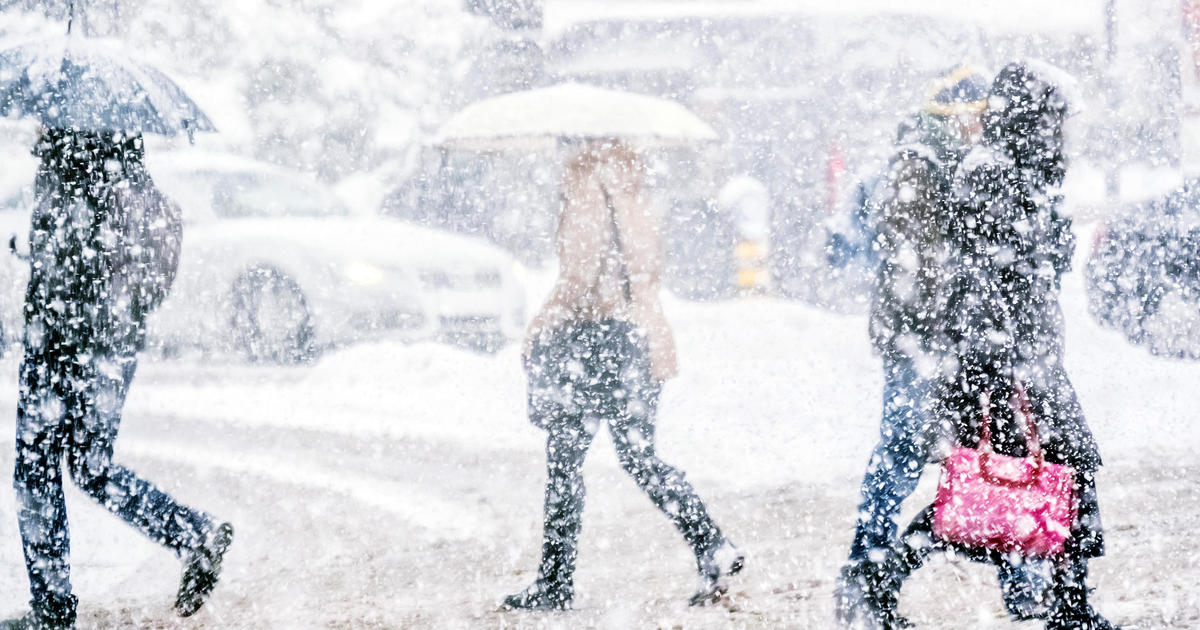What is a bomb cyclone? What to know about the weather phenomenon

A powerful winter storm is forecast to pound most of the U.S. with freezing temperatures and heavy snow this week, snarling holiday travel plans and prompting warnings from officials to remain vigilant. For millions of Americans in its path, the storm could intensify: It’s possible the storm could grow into a bomb cyclone or bombogenesis.
Whenever the weather phenomenon known as a bomb cyclone is mentioned by meteorologists, Google searches for the phrase start to spike — and we’re seeing the same trend this week.
So, here’s a brief breakdown of everything you need to know about it.
What is a bomb cyclone?
A bomb cyclone is a popular term for a fast-developing storm that occurs when atmospheric pressure drops at least 24 millibars over a 24-hour period, the National Oceanic and Atmospheric Administration notes online.
“A bomb cyclone occurs when atmospheric pressure at the center of the cyclone drops rapidly. In order to approximately qualify, the pressure needs to drop about 1 [millibar], or more, every hour over a 24-hour period,” John Moore, a public affairs specialist and meteorologist for the National Weather Service, told CBS News.
“This can happen when a cold air mass collides with a warm air mass, such as air over warm ocean waters,” NOAA explains.
What are the effects of a bomb cyclone?
The band of intense pressure can create heavy winds, blizzard conditions (heavy snow that can possibly reduce visibility) and rainfall, according to the agency. The heavy precipitation (rain and snow) can also cause coastal flooding in some affected areas.
“There can also be sharp temperature drops along the frontal boundary associated with some bomb cyclones. There can also be storms along the frontal boundary in the warm sector of the storm,” Moore said about other weather events often associated with a bomb cyclone.
When do bomb cyclones most often occur?
While bomb cyclones can happen at any point of the year, they tend to be more frequently reported in the winter months. They are most common from December to early March, according to a 2017 study from the Journal of Applied Meteorology and Climatology which analyzed the patterns of bomb cyclones over the northern Pacific Ocean from 2000 to 2015.
Moore says the same holds true today.
“Bomb cyclones often occur more during the cold season,” he agreed.
How to prepare for a bomb cyclone
Whenever a storm is forecast to hit your area, you should make sure to be prepared.
Stay up to date on the weather forecast for your region as the hazards of a bomb cyclone can vary by location, stock up on emergency supplies and ensure your home is protected.
“If you’re expecting impacts similar to a winter storm, prepare accordingly. If you live near a coastal area, coastal flooding could have an impact. Heavy rainfall associated with a bomb cyclone could also cause flooding, so those who live in areas that are susceptible to flooding should be on alert,” Moore said.
Share this news on your Fb,Twitter and Whatsapp
Times News Network:Latest News Headlines
Times News Network||Health||New York||USA News||Technology||World News